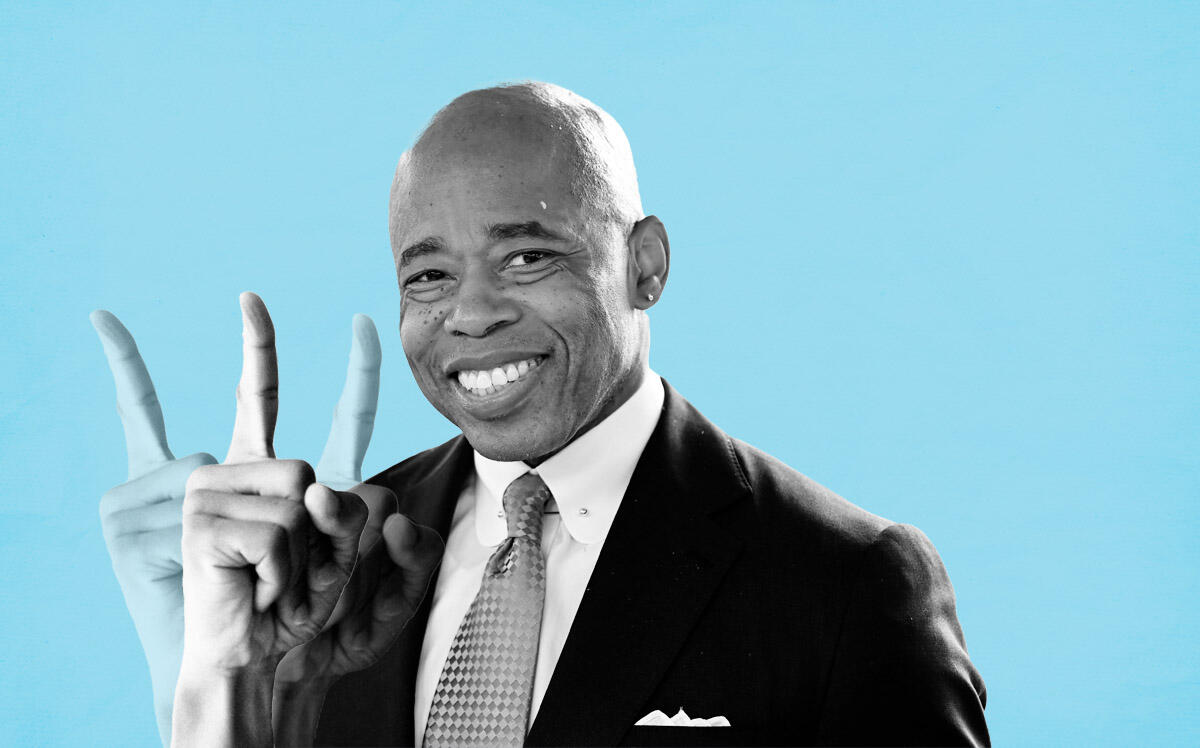Mayor Eric Adams is promising to create more affordable homes. How many? He won’t say.
Standing on the roof of 90 Sands Street, a former hotel in Dumbo that is being converted into supportive housing, the mayor on Tuesday unveiled a glossy copy of “Housing Our Neighbors Plan: A Blueprint for Housing and Homelessness.”
Adams made clear that, unlike his predecessor, he would not set affordable housing goals in terms of unit count. Instead, he said he is focused on how many people will be housed — though when pressed by reporters, he would not provide a number for that either.
“If you say 30,000 and you have 50,000 that are homeless, then what success is that? I got 20,000 people that are not [housed]. So I’m not at this magic number,” he said. “I’m going to get as many people, in my four years, into housing as possible.”
The blueprint does, however, make clear that his administration will advance a goal set by Bill de Blasio in 2015: It will create 15,000 supportive homes by 2028, two years earlier than envisioned by his predecessor.
The new plan won praise from housing groups, in part for focusing on the New York City Housing Authority and for framing of homelessness as a housing issue. One landlord group, the Community Housing Improvement Program, stated that it was particularly eager to work with the administration to “fix” the city’s housing voucher program.
Adams also committed to ramping up enforcement against source-of-income discrimination, having recently shifted staffers to a unit of the City Commission on Human Rights dedicated to such actions. (However, those employees were already working on housing discrimination enforcement, just in another capacity.)
In terms of creating affordable housing, the 94-page blueprint lays out a series of areas the city will explore and policy initiatives for which the administration will advocate, but is short on specifics about how they will be accomplished.
Some of the regulatory changes it envisions rely on state action, including property tax incentives (such 421a, which expires tomorrow) and the legalization of accessory dwelling units, both issues that lawmakers declined to resolve during the recent legislative session.
The legislature did not even manage to pass a watered-down ADU measure that would have simply given the city the option to bring illegal basement apartments up to code. The Adams administration acknowledges that state regulations must be changed to convert these units.
The blueprint reiterates the mayor’s intention to pursue zoning changes that allow smaller residential units, reduce parking requirements and provide building bonuses for affordable and supportive housing in R6 districts, in the same manner that increased floor area is provided to projects with senior housing.
These and other changes would require buy-in from the City Council.
The plan does not identify specific neighborhoods that the administration will seek to rezone, though it states that it will take a “citywide approach to encouraging new housing supply that holds every neighborhood accountable for meeting housing needs and increases equitable access to opportunity.”
That’s a fancy way of saying Adams will ask wealthy neighborhoods to allow denser housing.
The de Blasio administration drew considerable criticism for initially focusing on low-income neighborhoods and for rezoning barely half of the 15 areas it targeted. Its Mandatory Inclusionary Housing law requires projects built in rezoned areas to include affordable units.
The Adams housing plan also repeats the mayor’s commitment to removing “unnecessary barriers to development,” and to creating a Building and Land Use Approval Streamlining Taskforce, or BLAST.
The Legal Aid Society welcomed the effort to reduce red tape for affordable housing, but said removing such obstacles are only part of the problem. The city’s newly approved budget dedicated $5 billion to housing over the next decade, short of the annual infusion sought by advocates.
“Homeless New Yorkers, along with low-income households, need genuine access to safe, long-term and affordable housing,” the group said in a statement. “This is the only real solution to our city’s sprawling housing crisis, and we call on City Hall to continue to dedicate capital dollars to fund truly affordable housing development throughout the boroughs.”
